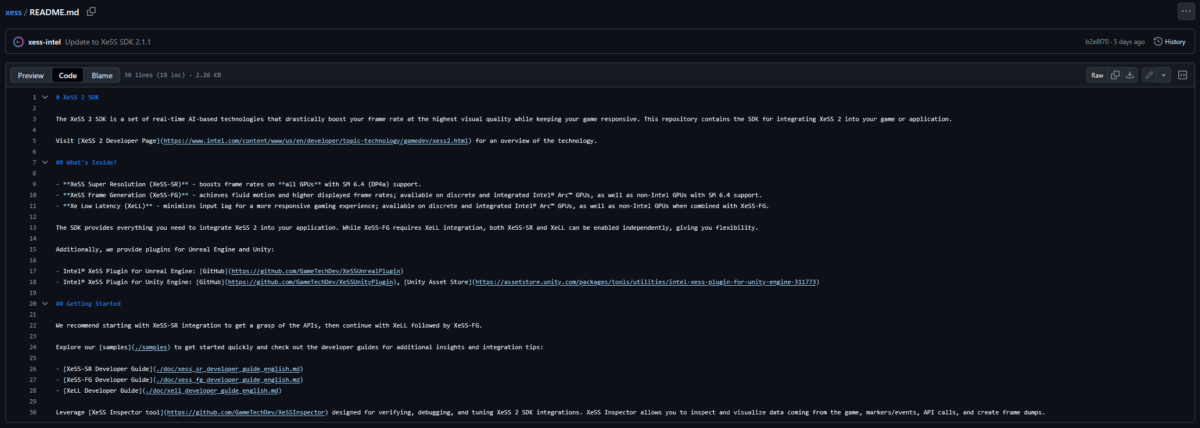Intel has removed the XMX (Xe Matrix Extensions) acceleration hardware requirement from its XeSS Frame Generation (XeSS-FG) solution, opening support on previously incompatible GPUs. Though the details are scarce, the technology seems to now work with any hardware compatible with XeSS DP4a upscaling. So, unless your GPU is too old and crusty, like my editor, you may soon have another frame-smoothing option in your games alongside AMD’s FSR Frame Generation.
For its initial launch, XeSS-FG required GPU architectures with XMX support, such as the Alchemist and Battlemage powering Arc A and B Series, plus their variants within Arrow Lake Arc 100T series and in Lunar Lake Arc 100T iGPUs. But now, according to the latest XeSS SDK 2.1.1 changelog on GitHub, this is no longer the case.
The document indicates that XeSS-FG is available on discrete and integrated Intel Arc GPUs, as well as non-Intel GPUs with Shader Model 6.4 support. On non-Intel GPUs and hardware lacking XMX, Intel provides a software fallback that leverages the compute shaders and DP4a integer instructions. This means that even old GPUs – like Nvidia’s GTX 10 Series and AMD’s RX 5000 – support XeSS-FG, giving them a slight push to help run modern games.

The file also specifically mentions Intel’s Meteor Lake chips as an example for iGPU support. However, this fallback is typically slower and has low-quality resolve compared to XMX acceleration, meaning one would expect lower frame rates and more visual artifacts than XMX-powered frame generation. Understandably, developer integration will be mandatory to implement XeSS-FG in each game as it is not a driver-level solution like AMD’s AFMF.
Lastly, the changelog also mentions that Xe Low Latency (XeLL), which minimises input lag like Nvidia’s Reflex and AMD’s Anti-lag, is now available to discrete and integrated Intel GPUs plus non-Intel GPUs when combined with XeSS-FG. The next step should be bringing XeSS Multi-Frame Generation to non-Intel hardware since Nvidia’s implementation is exclusive to GeForce RTX 50 Series.
Whether we like frame generation or not, it’s handy in some scenarios, so having it present on more hardware is a welcome change. Personally, I would like to see the XeLL feature available separately from XeSS-FG, to improve latency without being forced into frame generation. Seeing how Intel is embracing open standards, I wouldn’t be surprised to see this happen at some point.

